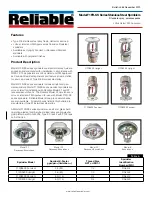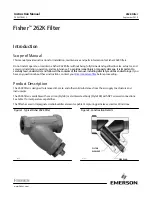
WaterBoss Filter Owner’s Manual
6/13/2012
11
Installation Steps, Cont.
Plastic (PVC/CPVC) Pipe Joining Procedure
To ensure reliable joint integrity when using solvent cement for PVC/CPVC plumbing, follow
these recommendations:
A.
Cutting
—The pipe must be cut square to allow for the proper interfacing of the pipe end and
the fitting socket bottom. Use a wheel cutter, miter saw, or a ratchet shear for best results.
B.
Deburring and Beveling
—Use a knife, plastic pipe deburring tool, or a file to remove burrs
from the end of the pipe. Be sure to remove all burrs from the inside as well as the outside of
the pipe. Remove all loose plastic debris since it could clog the injector. All pipe ends should
be beveled to permit easier insertion of the pipe into the fitting. Failure to bevel the pipe end
may cause a “wiping” effect in the fitting where the cement is forced to the end of the fitting
socket. This creates a weak joint.
C.
Test Dry Fit of the Joint
—Tapered fitting sockets are designed so that an interference fit
should occur when the pipe is inserted about one-third to two-thirds of the way into the
socket. Occasionally, when pipe and fitting dimensions are at the tolerance extremes, it will
be possible to fully insert dry pipe to the bottom of the fitting socket. When this happens, a
sufficient quantity of cement must be applied to the joint to fill the gap between the pipe and
fitting.
D.
Inspection, Cleaning, and Priming
—Inspect the inside of the pipe and fitting sockets and
remove dirt, grease, or moisture with a clean dry cloth. If wiping fails to clean the surfaces,
use a chemical cleaner. Check for possible damage such as splits or cracks and replace if
necessary. Use purple primer to penetrate and soften the bonding surfaces of the PVC or
CPVC pipe and fittings. Proceed without hesitation to the cementing procedure while the
primed surfaces are still wet.
E.
Application of Solvent Cement
—Apply the solvent cement evenly and quickly around the
outside of the pipe while the primer is still wet. Apply a light coat of cement evenly around the
inside of the fitting socket. Do not allow excess cement to “puddle” in the fitting. Apply a
second coat of cement to the pipe end.
F.
Joint Assembly
—Working quickly, insert the pipe into the fitting socket and give a 1/4-turn
of the pipe or fitting while pushing toward the fitting stop. This action will evenly distribute the
cement. Do NOT continue to rotate the pipe or fitting after the stop has been reached. Hold
the joint tightly together for about 15 seconds to prevent the pipe from “creeping” out of the
fitting. A good joint will have sufficient cement to make a small bead all the way around the
outside of the fitting hub. The joint should not be disturbed immediately after the cementing
procedure. Allow adequate time for the joint to cure properly. Exact drying time is hard to
predict because of environmental variables. Follow the recommended joint curing times on
the primer and cement container labels.
Summary of Contents for 900CF
Page 35: ...Notes...












































